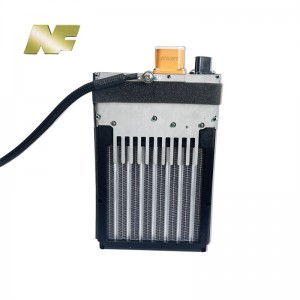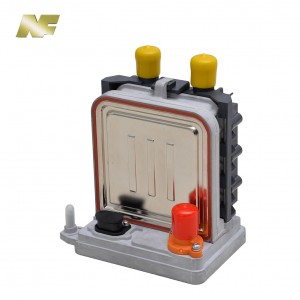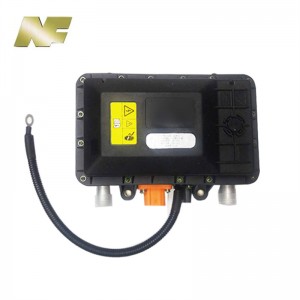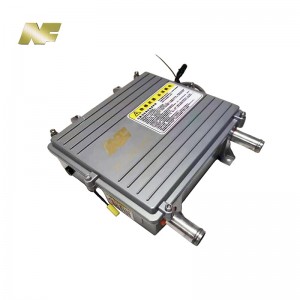Battery thermal management
During the working process of the battery, the temperature has a great influence on its performance. If the temperature is too low, it may cause a sharp decline in battery capacity and power, and even a short circuit of the battery. The importance of battery thermal management is becoming increasingly prominent as the temperature is too high which may cause the battery to decompose, corrode, catch fire or even explode. The operating temperature of the power battery is a key factor in determining performance, safety and battery life. From a performance point of view, too low a temperature will lead to a decrease in battery activity, resulting in a decrease in charge and discharge performance, and a sharp decline in battery capacity. The comparison found that when the temperature dropped to 10°C, the battery discharge capacity was 93% of that at normal temperature; however, when the temperature dropped to -20°C, the battery discharge capacity was only 43% of that at normal temperature.
Research by Li Junqiu and others mentioned that from a safety point of view, if the temperature is too high, the side reactions of the battery will be accelerated. When the temperature is close to 60 °C, the internal materials/active substances of the battery will decompose, and then "thermal runaway" will occur, causing the temperature A sudden rise, even up to 400 ~ 1000 ℃, and then lead to fire and explosion. If the temperature is too low, the charging rate of the battery needs to be maintained at a lower charging rate, otherwise it will cause the battery to decompose lithium and cause an internal short circuit to catch fire.
From the perspective of battery life, the impact of temperature on battery life cannot be ignored. Lithium deposition in batteries prone to low-temperature charging will cause the cycle life of the battery to rapidly decay to dozens of times, and high temperature will greatly affect the calendar life and cycle life of the battery. The research found that when the temperature is 23 ℃, the calendar life of the battery with 80% remaining capacity is about 6238 days, but when the temperature rises to 35 ℃, the calendar life is about 1790 days, and when the temperature reaches 55 ℃, the calendar life is about 6238 days. Only 272 days.
At present, due to cost and technical constraints, battery thermal management(BTMS) is not unified in the use of conductive media, and can be divided into three major technical paths: air cooling (active and passive), liquid cooling and phase change materials (PCM). Air cooling is relatively simple, has no risk of leakage, and is economical. It is suitable for the initial development of LFP batteries and small car fields. The effect of liquid cooling is better than that of air cooling, and the cost is increased. Compared with air, liquid cooling medium has the characteristics of large specific heat capacity and high heat transfer coefficient, which effectively makes up for the technical deficiency of low air cooling efficiency. It is the main optimization of passenger cars at present. plan. Zhang Fubin pointed out in his research that the advantage of liquid cooling is fast heat dissipation, which can ensure the uniform temperature of the battery pack, and is suitable for battery packs with large heat production; the disadvantages are high cost, strict packaging requirements, risk of liquid leakage, and complex structure. Phase change materials have both heat exchange efficiency and cost advantages, and low maintenance costs. The current technology is still in the laboratory stage. The thermal management technology of phase change materials is not yet fully mature, and it is the most potential development direction of battery thermal management in the future.
Overall, liquid cooling is the current mainstream technology route, mainly due to:
(1) On the one hand, the current mainstream high-nickel ternary batteries have worse thermal stability than lithium iron phosphate batteries, lower thermal runaway temperature (decomposition temperature, 750 °C for lithium iron phosphate, 300 °C for ternary lithium batteries), and higher heat production. On the other hand, new lithium iron phosphate application technologies such as BYD's blade battery and Ningde era CTP eliminate modules, improve space utilization and energy density, and further promote battery thermal management from air-cooled technology to liquid-cooled technology tilt.
(2) Affected by the guidance of subsidy reduction and the anxiety of consumers on driving range, the driving range of electric vehicles continues to increase, and the requirements for battery energy density are getting higher and higher. The demand for liquid cooling technology with higher heat transfer efficiency has increased.
(3) Models are developing in the direction of mid-to-high-end models, with sufficient cost budget, pursuit of comfort, low component fault tolerance and high performance, and the liquid cooling solution is more in line with the requirements.
Regardless of whether it is a traditional car or a new energy vehicle, consumers' demand for comfort is getting higher and higher, and cockpit thermal management technology has become particularly important. In terms of refrigeration methods, electric compressors are used instead of ordinary compressors for refrigeration, and batteries are usually connected to air-conditioning cooling systems. Traditional vehicles mainly adopt the swash plate type, while new energy vehicles mainly use the vortex type. This method has high efficiency, light weight, low noise, and is highly compatible with electric drive energy. In addition, the structure is simple, the operation is stable, and the volumetric efficiency is 60% higher than that of the swash plate type. %about. In terms of heating method, PTC heating(PTC air heater/PTC coolant heater) is needed, and electric vehicles lack zero-cost heat sources (such as internal combustion engine coolant)




Post time: Jul-07-2023




